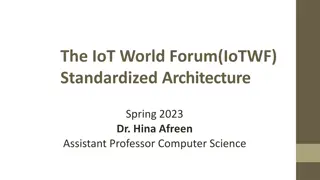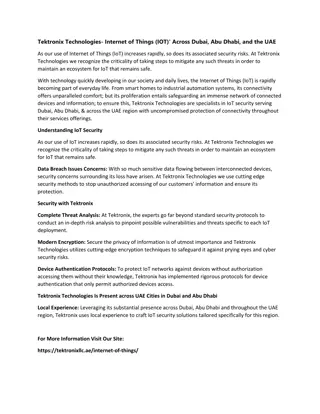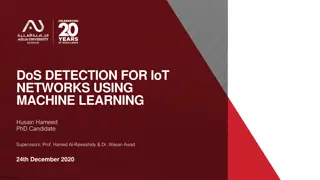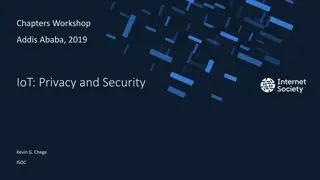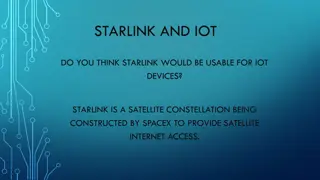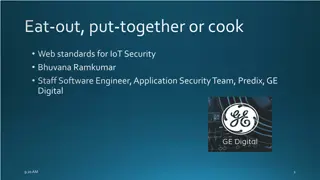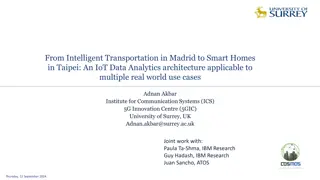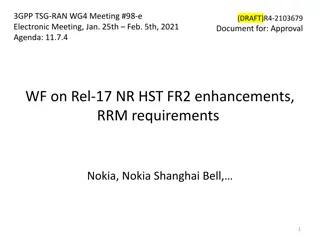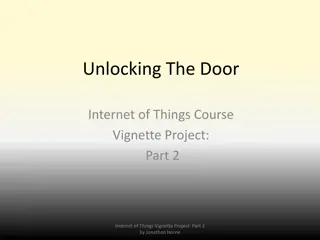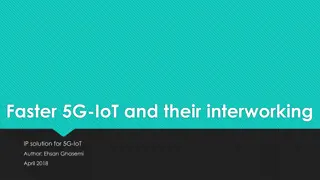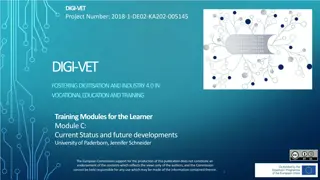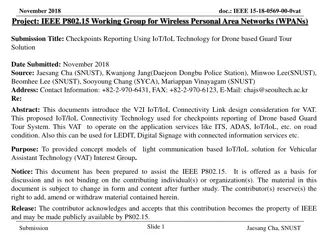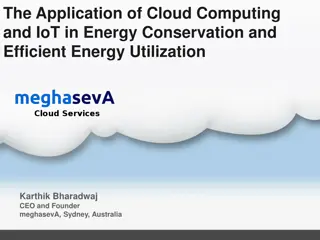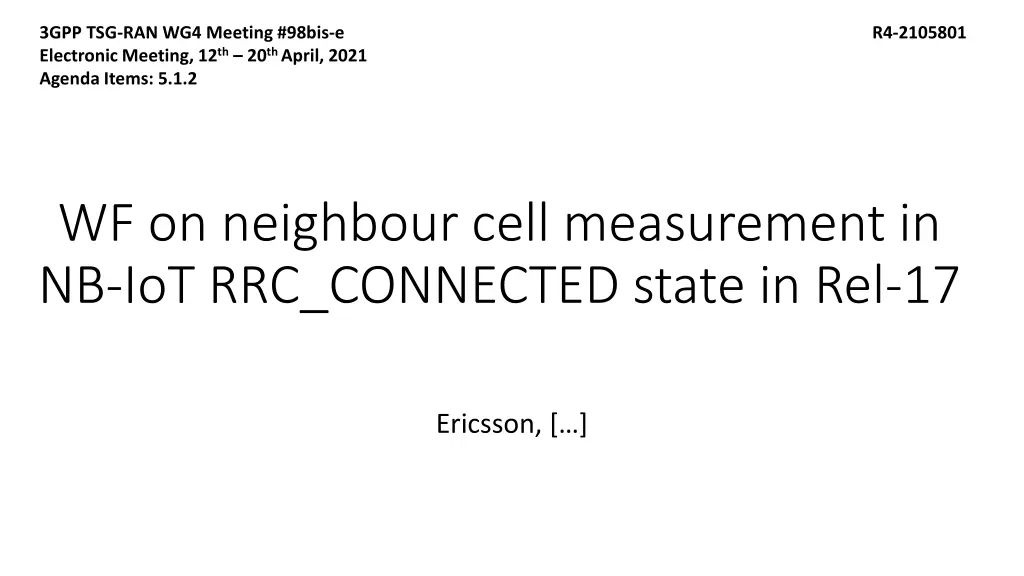
Neighbour Cell Measurement in NB-IoT RRC_CONNECTED State for Rel-17
Explore the scenarios for neighbour cell measurements in NB-IoT RRC_CONNECTED state in Rel-17. Understand how UE conducts measurements in different coverage situations, triggering conditions, and cell detection times. Get insights into the handling of measurement gaps and interruptions to the serving cell based on carrier frequency configurations.
Download Presentation

Please find below an Image/Link to download the presentation.
The content on the website is provided AS IS for your information and personal use only. It may not be sold, licensed, or shared on other websites without obtaining consent from the author. If you encounter any issues during the download, it is possible that the publisher has removed the file from their server.
You are allowed to download the files provided on this website for personal or commercial use, subject to the condition that they are used lawfully. All files are the property of their respective owners.
The content on the website is provided AS IS for your information and personal use only. It may not be sold, licensed, or shared on other websites without obtaining consent from the author.
E N D
Presentation Transcript
3GPP TSG-RAN WG4 Meeting #98bis-e Electronic Meeting, 12th 20th April, 2021 Agenda Items: 5.1.2 R4-2105801 WF on neighbour cell measurement in NB-IoT RRC_CONNECTED state in Rel-17 Ericsson, [ ]
Neighbour cell measurements in scenarios A/C In normal coverage, UE can perform neighbour cell measurement without gaps and without causing interruptions to serving cell when the carrier frequencies of serving cell and of measurement neighbour cell are same (scenarios A/C). In enhanced coverage, UE can perform neighbour cell measurement without gaps and without causing interruptions to serving cell when the carrier frequencies of serving cell and of measurement neighbour cell are same (scenarios A/C).
Neighbour cell measurements in scenarios B/D/E In normal coverage, when the carrier frequencies of serving cell and of measurement neighbour cell are different (scenarios B/D/E), UE can perform neighbour cell measurement without gaps and without causing interruptions to serving cell in any occasion where the UE is not scheduled which includes any of the following: Vacant slots not scheduled for data transmission, i.e. when not required to do data transmission/reception When not required to do NPDCCH monitoring during the DRX inactive period i.e. when the UE is configured with DRX. In enhanced coverage, when the carrier frequencies of serving cell and of measurement neighbour cell are different (scenarios B/D/E), UE can perform neighbour cell measurement without gaps and without causing interruptions to serving cell in any occasion where the UE is not scheduled which includes any of any of the following : Vacant slots not scheduled for data transmission, i.e. when not required to do data transmission/reception When not required to do NPDCCH monitoring during the DRX inactive period i.e. when the UE is configured with DRX.
Measurement triggering conditions The UE starts performing the neighbour cell measurements when the serving cell quality deteriorates, e.g. When X number of out-of-sync indications is detected by the UE The UE stops the neighbour cell measurements when the serving cell quality improves, e.g. When Y number of in-sync indications is detected by the UE Values of X and Y are FFS.
Cell detection time Normal coverage: 1400 ms in DRX and non-DRX 80 ms in DRX and non-DRX when signal quality is sufficient for cell detection on first attempt Enhanced coverage: 14800 ms in DRX and non-DRX 80 ms in DRX and non-DRX when signal quality is sufficient for cell detection on first attempt
Measurement time Coverage mode Measurement period in DRX and non-DRX NRS based NRSRP NSSS based NRSRP Normal coverage 800 ms 1600 ms Enhanced coverage 1600 ms 1600 ms
Known cell conditions The neighbour cell can be considered as known if it has been measured within the last 5 seconds and during which the cell remains detectable; otherwise the neighbour cell can be considered as unknown.

